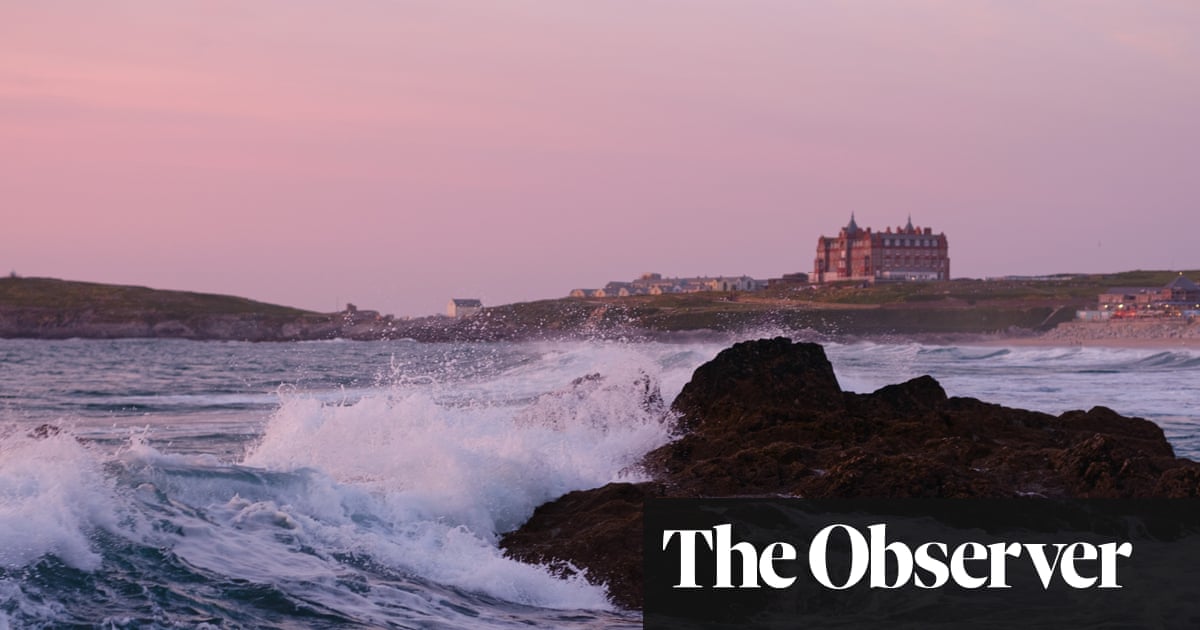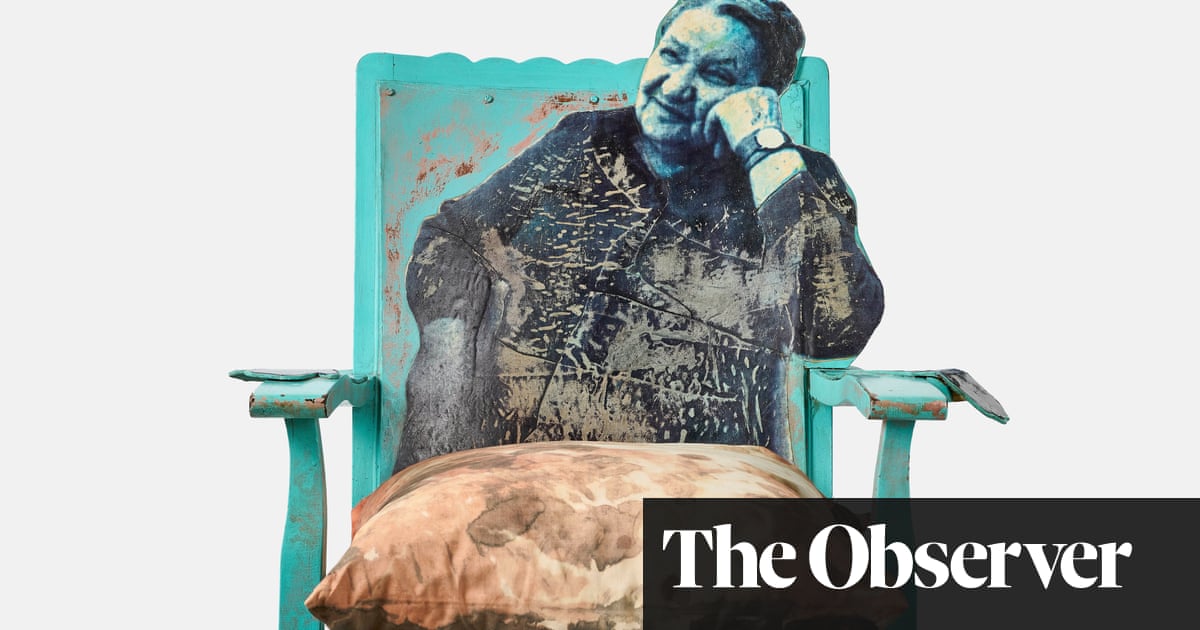A squirrel gives the photographer a warm welcome at Ostafyevo park in Moscow, Russia
Photograph: Maxim Shipenkov/EPA

Three black-headed gulls look extremely disgruntled by the sudden snowy weather in Kidderminster, Worcestershire, as a large part of the UK woke to colder conditions this week
Photograph: Lee Hudson/Alamy Live News

Elephants enjoy a mud bath at the Sheldrick Wildlife Trust elephant orphanage in Nairobi National Park, Kenya. The park is a rehabilitation centre for animals orphaned by poaching
Photograph: Anadolu/Getty Images

Three hundred harvest mice have been released in the North York Moors National Park, UK. The tiny mice have been released in the hope of re-establishing a local breeding population of this once-common species. Harvest mice, once a widespread species in the UK, are now classified as near threatened and are highly vulnerable to predators such as cats, owls, and crows. They rely on dense vegetation, such as long grass and reeds, to build their distinctive woven nests
Photograph: Emily Ramsden/North York Moors National Park

Canada geese inspect the freshly fallen snow at a park in Buxton, Derbyshire, UK
Photograph: Peter Byrne/PA

Slippery customer … after 15 children’s shoes disappeared from their cubbyholes at a Japanese kindergarten, police set camera traps to catch the thief, who turned out to be a weasel. It’s believed the furry felon was using the shoes to line its nest. “We were very worried, but we’re relieved now that we know it was an animal,” said a member of the kindergarten’s staff. You can see footage of the thief in action here
Photograph: Stephan Morris Photography/Alamy

Butterflies feed on blooming flowers in Nanning, southern China
Photograph: Costfoto/NurPhoto/Rex/Shutterstock

This bee colony hangs from a fencepost on the border of a farm in Tsavo, Kenya, where it helps deter problematic intruders – not humans, but elephants. Following the success of conservation measures, elephant numbers have risen to the point where they are encroaching on farms in the area. But a long-running project by the charity Save the Elephants offers an unlikely solution: by integrating honeybees into fences around farms, they are deterring some of nature’s biggest animals with some of its smallest
Photograph: Tony Karumba/AFP/Getty Images

An American robin snaffles a holly berry in a thicket near Elkton in southwestern Oregon, US. Many birds can safely consume holly berries, including blackbirds, redwings and thrushes. There is an old wives’ tale that if you see a bird eating a berry, it is safe for humans to eat – but this is not true. Birds consume many plants that are poisonous to humans, holly berries included
Photograph: Robin Loznak/Zuma Press Wire/Rex/Shutterstock

Flamingos in Larnaca Salt Lake, Cyprus
Photograph: Xinhua/Rex/Shutterstock

Long-tailed macaques rest at Phra Prang Sam Yot temple in Lopburi, Thailand. Prior to the Covid outbreak, the town was known as Monkey City; residents would feed the 3,000 local macaques and even threw an annual fruit banquet for them, drawing tourists. All this stopped during lockdown and the monkeys turned feral, scrounging food and brawling. “We have to cage ourselves inside; we have no freedom even on the premises of our own homes,” said Jirat Buapromart, 54. “They are ready to steal anything they can from us.” Officials are hoping to catch and sterilise as many macaques as they can
Photograph: Chalinee Thirasupa/Reuters

A herd of red deer blend in with the bracken on an autumn morning in Richmond Park, London, UK
Photograph: Justin Tallis/AFP/Getty Images

A black bear rests in an oak tree in Plainfield, New Jersey, US – a city of 54,000 people (not far from where The Sopranos was set). Since the 1980s the state’s black bear population has been increasing and expanding its range out of forested areas and into more populated regions, alarming the residents; last year a bear was euthanised after charging a police officer. This one, however, made its way safely back to the woods
Photograph: Zuma/Alamy Live News

Gulls fly over the Yamuna river engulfed in a thick layer of smog in New Delhi, India. Earlier this month, levels of fine particulate matter in the air were more than 50 times what is considered safe by the World Health Organisation, resulting in school closures, illness and misery. Falling temperatures, smoke, dust, low wind speed, vehicle emissions, and burning crop stubble are the main causes of the hazardous air that the northern states and the nation’s capital face every year from October to January
Photograph: Anadolu/Getty Images

One-horned rhinoceroses graze at the Pobitora Wildlife Sanctuary in Assam, India
Photograph: Anuwar Hazarika/NurPhoto/Rex/Shutterstock

A group of chamois, a species of goat-antelope, perch on the rocks on the island of Šolta, Croatia
Photograph: Marko Đurica/Reuters

A magnificently antlered deer spots the camera in a forested area of Bolu province, Turkey
Photograph: Anadolu/Getty Images

A walrus in Svalbard, Norway gets ready to celebrate World Walrus Day on Sunday. Reaching more than 3m long and weighing over a tonne, walruses regularly spend most of their time on sea ice. As climate change causes the sea ice to shrink, walrus are forced to gather in large numbers on Arctic beaches and shorelines. With their large size and increasing numbers, they can trample one another. WWF and British Antarctic Survey are using satellite imagery to locate walrus in the summer months to see how they are affected by climate change as a part of their six-year Walrus from Space project
Photograph: WWF

A common vole pops up on a farm in Gölbaşı district, Ankara, Turkey
Photograph: Anadolu/Getty Images


 3 months ago
57
3 months ago
57













































